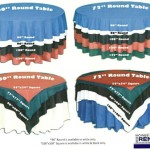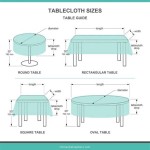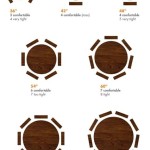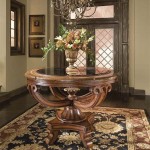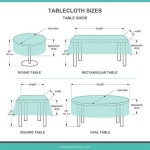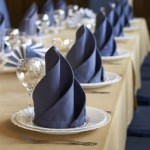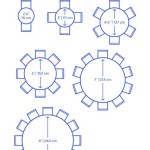How To Build A Garden Table From Scaffold Boards
Constructing a garden table from scaffold boards offers a robust, aesthetically pleasing, and cost-effective solution for outdoor seating and dining. Scaffold boards, known for their durability and distinctive character, provide a rustic charm that contrasts well with the often-manicured setting of a garden. This article details the step-by-step process of building a garden table using scaffold boards, covering the necessary materials, tools, and techniques involved.
Before commencing any construction project, planning and preparation are paramount. This includes accurately measuring the desired table dimensions, selecting suitable scaffold boards, and acquiring all the necessary tools and materials. A well-defined plan will significantly streamline the building process and minimize potential errors. Furthermore, safety precautions should always be observed throughout the entire project, including wearing appropriate protective gear.
Selecting and Preparing Scaffold Boards
The first crucial step involves selecting appropriate scaffold boards. Ideally, the boards should be straight, free from significant warping or twisting, and structurally sound. While the weathered appearance of used scaffold boards adds character, ensure that they are not excessively damaged or weakened by rot. The number of boards required will depend on the desired table size.
Once the boards are selected, they require thorough cleaning. This typically involves removing any loose debris, dirt, or remnants of cement or paint. A stiff brush and water, possibly with a mild detergent, can be used for this purpose. For more stubborn stains, a pressure washer can be employed, but caution should be exercised to avoid damaging the wood. Allow the boards to dry completely after cleaning, preferably in a well-ventilated area.
After cleaning, consider sanding the scaffold boards to achieve a smoother surface. The level of sanding will depend on the desired aesthetic. For a rustic look, minimal sanding to remove splinters and rough edges might suffice. For a more refined finish, a more thorough sanding process using progressively finer grades of sandpaper is recommended. Electric sanders, such as orbital sanders or belt sanders, can significantly expedite this process. Remember to wear a dust mask to protect yourself from sanding dust.
Following sanding, the boards should be treated to protect them from the elements. A variety of wood preservatives, stains, and sealants are available. The choice will depend on the desired color and the level of protection required. Wood preservatives typically contain fungicides and insecticides to prevent rot and insect infestation. Stains add color while still allowing the wood grain to show through. Sealants provide a waterproof barrier to prevent water damage. Apply the chosen treatment according to the manufacturer’s instructions, typically involving multiple coats with sufficient drying time between each coat.
When working with scaffold boards, potential hazards should be considered. These include splinters, nails, and the weight of the boards. Wear appropriate gloves to protect your hands from splinters and nails. When lifting and moving the boards, use proper lifting techniques and enlist assistance if necessary to avoid strain or injury. Inspect the boards carefully for any protruding nails or staples and remove them before proceeding.
Constructing the Table Frame
The table frame provides the structural support for the tabletop. It is typically constructed from timber, either treated softwood or hardwood, depending on the desired durability and aesthetic. The dimensions of the frame will depend on the size of the tabletop and the desired table height. A common table height is approximately 75 cm (30 inches), but this can be adjusted to suit individual preferences.
The frame typically consists of four legs, connected by rails that run along the length and width of the tabletop. The legs can be made from square or rectangular timber, with a minimum thickness of 75mm x 75mm (3 inches x 3 inches) for adequate stability. The rails can be made from similar timber, but a slightly smaller dimension, such as 50mm x 75mm (2 inches x 3 inches), may be sufficient.
The legs and rails are typically joined using mortise-and-tenon joints, dowel joints, or screws and glue. Mortise-and-tenon joints provide the strongest connection, but they require more skill and precision to create. Dowel joints are a simpler alternative, involving drilling holes in the joining pieces and inserting dowels to secure them. Screws and glue are the easiest option, but they may not provide the same level of strength as the other two methods. Whichever method is chosen, ensure that the joints are properly aligned and securely fastened.
To enhance stability, consider adding diagonal braces between the legs and the rails. These braces will prevent the table from wobbling and provide additional support. The braces can be made from the same timber as the legs and rails and attached using screws and glue.
The frame should be constructed on a flat, level surface to ensure that the table is stable. Use a spirit level to check that the legs are vertical and the rails are horizontal. Make any necessary adjustments before permanently fastening the joints.
Attaching the Scaffold Board Tabletop
Once the table frame is complete, the scaffold board tabletop can be attached. The boards should be arranged on top of the frame, ensuring that they are evenly spaced and aligned. The number of boards required will depend on the desired width of the table.
The boards can be attached to the frame using screws, bolts, or glue. Screws are the most common option, as they are easy to install and provide a secure connection. Bolts provide a stronger connection, but they require drilling holes through the boards and the frame. Glue can be used in conjunction with screws or bolts to provide additional strength.
When using screws, pre-drill pilot holes through the boards and into the frame to prevent the wood from splitting. The screws should be long enough to penetrate at least half the thickness of the frame. Use countersunk screws to ensure that the screw heads are flush with the surface of the boards.
When using bolts, ensure that the holes are accurately drilled and that the bolts are properly tightened. Use washers under the bolt heads and nuts to distribute the pressure and prevent damage to the wood.
After attaching the tabletop, inspect the table for any sharp edges or splinters. Sand down any rough areas to create a smooth, safe surface. Consider applying a final coat of sealant to protect the tabletop from the elements and enhance its durability.
The distance between the boards impacts the water drainage. Closer spacing might look more appealing, but wider spacing helps water drain faster and prevents prolonged exposure to moisture.
Optional additions to consider include adding a parasol hole drilled through the center of the table, or integrating planters into the table design. These modifications require careful planning and execution to ensure structural integrity and aesthetic appeal.
Regular maintenance will prolong the life of the garden table. This includes periodic cleaning, re-application of sealant, and addressing any signs of rot or damage promptly. Properly maintained, a scaffold board garden table will provide years of enjoyment and add a touch of rustic charm to any outdoor space.
Properly sourced scaffold boards from reputable suppliers ensure that they are compliant with safety standards. Avoid using boards from unknown sources that may have been treated with hazardous chemicals. Information regarding the treatment methods is typically stamped directly onto the scaffold boards.

Thrifty Diy How To Upcycle Scaffolding Boards Into A Garden Table My Life By Cassie Fairy Inspiration For Living Lovely On Budget

How To Diy Rustic Garden Benches Using Upcycled Scaffold Boards My Thrifty Life By Cassie Fairy Inspiration For Living A Lovely On Budget

Makeover A Dining Table Made From Scaffold Boards Roses And Rolltops

Thrifty Diy How To Upcycle Scaffolding Boards Into A Garden Table My Life By Cassie Fairy Inspiration For Living Lovely On Budget

What To Do With Reclaimed Scaffold Boards Gilray Plant

Thrifty Diy How To Upcycle Scaffolding Boards Into A Garden Table My Life By Cassie Fairy Inspiration For Living Lovely On Budget

Thrifty Diy How To Upcycle Scaffolding Boards Into A Garden Table My Life By Cassie Fairy Inspiration For Living Lovely On Budget

Makeover A Dining Table Made From Scaffold Boards Roses And Rolltops

Reclaimed Scaffold Board Outdoor Table Top Scaff The

How To Make Unique Scaffolding Board Furniture Pillar Box Blue
Related Posts

